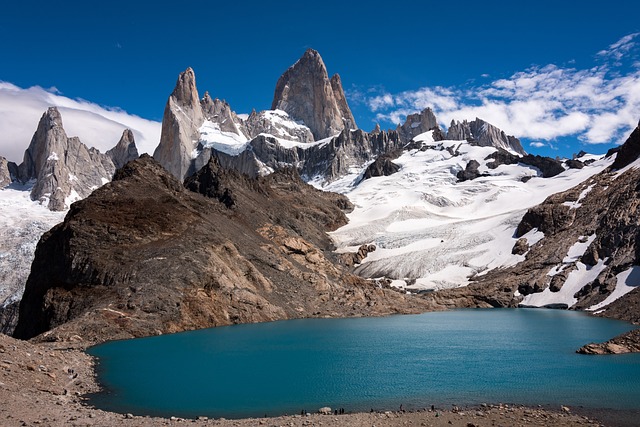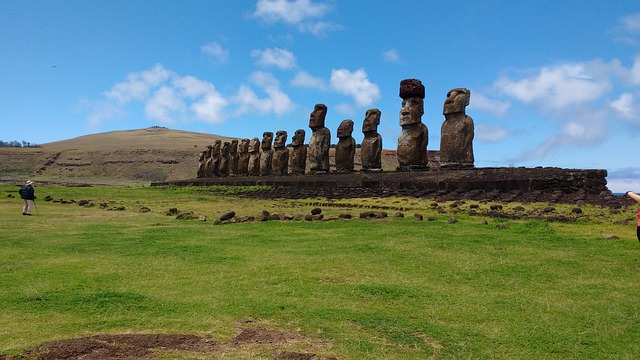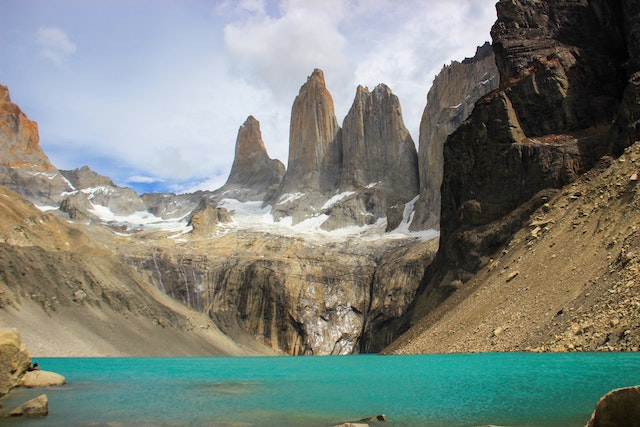
The Best 44 Interesting Facts about Chile You Never Knew
Interesting Facts about Chile
Before we delve into the most interesting facts about Chile, let’s take a moment to empathize with the journey you’re about to embark on. You might be a traveler looking for your next exotic destination, a student seeking information for your geography project, or simply a curious soul eager to expand your knowledge about the world. Wherever you are, grab a comfy chair and a cup of coffee, and let’s embark on this remarkable journey together.
Welcome, curious minds! Let’s embark on a thrilling journey to the thin strip of a South American country that fascinates you with its charm and uniqueness. Stretching over 2,600 miles from the driest desert in the north of the country to the windswept plains of Tierra del Fuego in the south, Chile promises an adventure of a lifetime.
Geography and Natural Wonders

- Stretching the Limits: The World’s Longest Country
Chile is recognized as the world’s longest north-to-south country, extending over 2,600 miles from the north to the south. Sandwiched between the Pacific Ocean and the towering Andes Mountains, it is a geographical marvel.
- From Arid to Glacial: Contrasting Climates
The climate ranges from the world’s driest desert, Chile’s Atacama Desert in northern Chile, to the southern regions, home to the windswept plains of Tierra del Fuego and the glacial fields.
- An Astronomical Paradise: San Pedro de Atacama
San Pedro de Atacama is not only home to the driest place on Earth but is also renowned for clear, unpolluted skies perfect for astronomical observation.
- Torres Del Paine National Park: A UNESCO World Heritage Site
One of the best places to visit is the Torres del Paine National Park, a UNESCO World Heritage site located in southern Chile. This national park offers breathtaking views of mountains, glaciers, and lakes.
Cultural Richness and Historical Facts

- Land of the Poets: Pablo Neruda and Gabriela Mistral
Chile has been referred to as the “country of poets”. Two Chilean poets, Pablo Neruda, and Gabriela Mistral, have won the Nobel Prize in Literature, contributing significantly to the country’s cultural significance.
- Indigenous Roots: The Rapa Nui
Indigenous groups such as the Rapa Nui on Easter Island, a remote Chilean territory, have a rich cultural heritage, including the famous Moai statues.
- Prehistoric Inhabitants: The Chinchorro Mummies
The Chinchorro mummies found in northern Chile are considered the world’s oldest mummies, dating back to around 5050 BC. This predates the Egyptian mummies by thousands of years.
Remarkable Landmarks and Urban Facts
- Chile’s Urban Giant: Gran Torre Santiago
In the capital city of Chile, Santiago, you’ll find the Gran Torre Santiago – the tallest building in Latin America. The observation deck offers stunning views of the urban areas and surrounding mountains.
- World’s Southernmost City: Puerto Williams
Situated further south than Punta Arenas, Puerto Williams holds the record as the world’s southernmost city.
- The Largest Swimming Pool: San Alfonso del Mar Resort
The San Alfonso del Mar Resort houses the world’s biggest swimming pool, which is more than 1km long, covering 20 acres.
Unique Chilean Facts and Trivia

- Chile’s National Drink: Pisco Sour
A blend of Pisco, a type of brandy, with egg whites, lemon juice, and sugar, the Pisco Sour is Chile’s national drink, with its roots dating back to colonial times.
- An Unlikely Wine Haven
Chilean wine, especially the Cabernet Sauvignon, is appreciated worldwide. The Central Valley, or the wine country, is the perfect place to explore this cultural delight.
- An Unexpected UFO Hotspot
Chile has one of the highest numbers of UFO sightings worldwide. The Chilean government even established a public agency to study these occurrences.
Historical Events and Figures
- The Reign of Pinochet
Augusto Pinochet’s dictatorship from 1973-1990 marked a significant period in Chile’s history, with its impacts still evident today.
- Chile’s Role in Literary Works
Robinson Crusoe Island, part of Chile, inspired the famous novel “Robinson Crusoe” by Daniel Defoe. The island is named after Alexander Selkirk, a Scottish sailor marooned there in the early 18th century.
- Historical Earthquake
Chile was the epicenter of the largest earthquake ever recorded, with a magnitude of 9.5 on the Richter scale, in 1960. This natural disaster greatly influenced Chile’s readiness and response to seismic activities.
Fun Facts: The Intriguing and the Unexpected

- An Iconic Symbol: The Chilean Flag
The flag of Chile, or “La Estrella Solitaria,” meaning “The Lone Star,” is a visual representation of the Republic of Chile. The blue square symbolizes the sky and the Pacific Ocean, the white band depicts the snow-covered Andes, and the red represents the blood of the heroes who fought for independence.
- A Mountainous Haven: Active Volcanoes
Chile boasts about 500 active volcanoes, with the most famous being Villarrica and Ojos del Salado. The latter, situated in northern Chile, is the highest active volcano globally and the second-highest peak in the southern hemisphere.
- The Fascinating Chinchorro Mummies
The Chinchorro people, the native people of the Atacama Desert region, practiced mummification thousands of years before the Egyptians. The Chinchorro mummy discovered in Monte Verde, southern Chile, has drawn significant interest from archeologists worldwide.
- A Literary Country: Nobel Prize Winners
Chile takes immense pride in its literary prowess. With two Nobel laureates – Gabriela Mistral, the first Latin American woman to win the Nobel Prize in Literature, and Pablo Neruda, Chile’s national poet – the country has left an indelible mark on global literature.
Historic Landmarks and Architecture
- Legacy of the Spanish Colonizers: Public Buildings
Public buildings from the 16th century, a period marked by Spanish colonization, are spread across the country. These structures, often adorned with colonial architecture, bear witness to Chile’s history.
- A Remarkable UNESCO Site: Santa Laura Saltpeter Works
The Santa Laura Saltpeter Works, a UNESCO World Heritage site, tells the tale of Chile’s mineral resources. This site was crucial for producing saltpeter, a key ingredient in fertilizers, contributing to global agricultural development.
- The Traces of Ferdinand Magellan
Ferdinand Magellan, a Portuguese explorer, is recognized for his expedition that circumnavigated the globe. He navigated through a strait at the southern tip of South America, now known as the Strait of Magellan, near Cape Horn in Chile.
Biodiversity and Natural Phenomena

- The Magellanic Penguins
South-central Chile and the Lake District are home to a large number of Magellanic penguins. They got their name from Ferdinand Magellan, who first spotted them in the 16th century.
- Coping with the Climate: Average Rainfall
Chile’s diverse geography translates into contrasting weather patterns. The Atacama Desert in the north experiences an arid climate with almost no rainfall, while the south-central regions, including the Lake District, receive substantial average rainfall, fostering lush green landscapes.
Extraordinary Events and Achievements
- An Athletic Triumph: FIFA World Cup
Chile hosted the FIFA World Cup in 1962, a significant event that placed the country on the global sports map. Despite the devastation caused by the biggest earthquake just two years prior, Chile managed to finish third, their best performance to date.
- A Country of Fiestas: Fiestas Patrias
The Fiestas Patrias, a series of national celebrations in September, marks the proclamation of the First Governing Body of Chile in 1810. It’s one of the most anticipated times in Chile, filled with traditional music, dance, and food.
- A Maritime Achievement: Panama Canal
Chilean ships, prior to the construction of the Panama Canal, had to navigate through the treacherous waters of Cape Horn. The canal’s opening in 1914 significantly reduced the time and risks associated with maritime trade.
- The Giant of South America: Square Miles of Chile
With an area of over 290,000 square miles, Chile is one of the largest South American countries, despite its narrow width of just 110 miles at its widest point.
- Chile’s Connection with ‘Moby Dick’
Herman Melville’s ‘Moby Dick draws inspiration from a real event involving a whaling ship, the Essex, and a sperm whale. The ship’s captain, on his previous voyage, had visited the offshore islands of Chile, and some believe this may have inspired Melville’s descriptions of the Pacific.
Chile’s National Parks: Preserving Natural Heritage
Chile’s geographic diversity, spanning the driest desert in the north, through fertile valleys and ethereal forests, to the icy fjords of the south, is mirrored in its impressive array of national parks. These parks, dotted across the country, each offer unique opportunities for exploration and discovery. Here are a few of the most significant ones.
- Torres del Paine National Park

The Torres del Paine National Park, located in southern Chile, is arguably the country’s most iconic national park. Named a UNESCO Biosphere Reserve in 1978, the park is renowned for its three distinctive granite peaks, the ‘Torres del Paine’, from which it takes its name. It offers an unforgettable experience for nature enthusiasts with its diverse wildlife, turquoise waters, sprawling glaciers, and trails that wind through enchanting landscapes.
- Rapa Nui National Park
On the remote Easter Island, the Rapa Nui National Park houses the monumental Moai statues, an enduring symbol of the Rapa Nui culture. This UNESCO World Heritage site continues to perplex archaeologists and enthrall visitors with its mysterious, ancient stone figures.
Lauca National Park
- Lauca National Park
Nestled in the Andean range, in northern Chile, Lauca National Park boasts a stunning collection of snow-capped volcanoes, sparkling lakes, and wide-ranging flora and fauna. The park is also home to one of the world’s highest navigable lakes, Lake Chungará, and the picturesque Parinacota volcano.
- Conguillío National Park
Situated in the Araucanía region of south-central Chile, Conguillío National Park is known for its Araucaria forests and the Llaima Volcano, one of the largest and most active volcanoes in Chile. The park’s unique landscape, a mix of lava flows, verdant forests, and serene lagoons, offers a remarkable spectacle.
- Bernardo O’Higgins National Park
The Bernardo O’Higgins National Park, located in southern Chile, is the largest of Chile’s national parks. Most of the park’s area is covered with ice fields, including the Southern Patagonian Ice Field, the world’s third-largest ice mass. This remote park is a haven for nature lovers, offering breathtaking views of glaciers, fjords, and rich wildlife.
Chile’s national parks are a testament to the country’s commitment to conserving its diverse ecosystems. They are a crucial part of Chile’s rich natural heritage, offering a window into the country’s varied flora, fauna, and stunning landscapes. They are also a paradise for outdoor enthusiasts, offering a myriad of opportunities for hiking, wildlife watching, photography, and much more.
Whether you’re a casual visitor looking for a peaceful getaway amidst nature or an adventurer seeking to conquer rugged terrains, Chile’s national parks have something to offer for every kind of nature enthusiast. Indeed, the experience of exploring these parks can be as diverse and enriching as Chile itself.
Facts about Chile 4 Frequently Asked Questions

What are some famous UNESCO World Heritage Sites in Chile?
Chile houses several UNESCO World Heritage Sites, including the Rapa Nui National Park on Easter Island and the Historic Quarter of the Seaport City of Valparaíso. The Humberstone and Santa Laura Saltpeter Works are other notable sites.
What is the highest mountain in Chile?
The highest mountain in Chile is Ojos del Salado, which is also the world’s highest active volcano.
What is the biggest earthquake ever recorded, and where did it occur?
The biggest earthquake ever recorded occurred in Valdivia, Chile, in 1960. It had a magnitude of 9.5 on the Richter scale.
What sports events has Chile hosted?
Chile hosted the FIFA World Cup in 1962.
Facts about Chile 5 Frequently Asked Questions
What is the capital city of Chile?
Santiago is the capital city and the largest city in Chile.
What is the driest place on Earth?
The Atacama Desert in Chile is the world’s driest desert.
Who are some notable Chilean figures?
Gabriela Mistral and Pablo Neruda are Nobel Prize-winning poets from Chile.
What is the tallest building in Chile?
The Gran Torre Santiago is the tallest building in Chile, as well as in Latin America.
What is Chile’s national drink?
Chile’s national drink is Pisco Sour, a blend of Pisco, lemon juice, sugar, and egg whites.
Facts about Chile Conclusion
As we round off our journey of discovery, it’s clear that the ‘Land of Poets’ holds far more than meets the eye. The Republic of Chile, from its northern desert to its southern glaciers, serves as a testament to the resilience and vibrancy of nature and the human spirit alike. It’s a country that has tasted the ashes of volcanic eruptions and the salty spray of the Pacific, yet stands tall and proud, a beacon of cultural richness and diversity.
What we have uncovered are merely a few interesting facts about Chile. The longest country on the planet has many mysteries tucked away, waiting to be discovered. Chile, with its impressive expanse of over 290,000 square miles, has something for every curious mind. Now discover fascinating facts about Argentina.
From the first Latin American woman Nobel laureate to the Magellanic penguins, from the arid Atacama to the average rainfall nourishing the central valleys, every facet of Chile is a chapter in an unfolding story.
Remember
Remember the Pisco Sour and the taste of the Cabernet Sauvignon. Let the words of Neruda echo in your ears and the sight of the towering Andes etch a permanent sketch in your memory. As you journey through life, carry a part of Chile with you, and who knows, someday you might find yourself walking the cobbled streets of Santiago or gazing at the majestic Moai of Easter Island.
Chile, with its rich tapestry of history, culture, nature, and modernity, beckons the curious and the adventurous. So, whether you’re a student, a traveler, or someone who appreciates the beauty of diversity, let Chile’s charm enchant you. And remember, this is only the beginning. The world is vast, and Chile is a splendid chapter in this endless book.
Sources:
“Chile.” Encyclopædia Britannica. Encyclopædia Britannica, inc., 22 Mar. 2023. This resource provides a comprehensive overview of Chile’s geography, history, economy, and culture.




